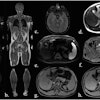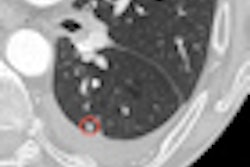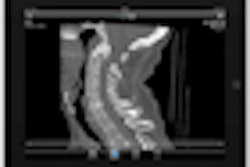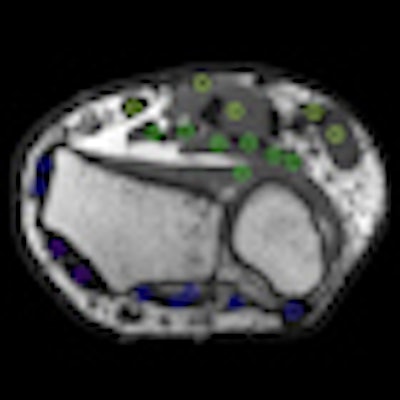
PARIS -- Following the success of Monster Anatomy, an interactive MRI atlas of the lower limbs, the development team at the University Hospital of Nancy in France announced the release of a new module for the upper limbs.
Designed for the iPhone and the iPad, Monster Anatomy Upper Limb allows users to scroll through 500 MRI slices at intervals of 2 to 4 mm for a high-definition examination of muscle, nerves, and other structures from the shoulder to the fingertips.
Monster Anatomy Lower Limb offers 384 MRI slices that can be viewed in the sagittal, coronal, and axial planes and includes a 3D display of the region of interest with a line indicating the level of the MRI slice being viewed.
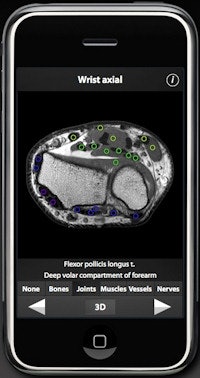 The upper limb app allows users to scroll through 500 MRI slices at intervals of 2-4 mm.
The upper limb app allows users to scroll through 500 MRI slices at intervals of 2-4 mm.
More than 5,500 copies of the lower limb module were sold through the Apple Store since its release in March 2010. The iPhone app retails for 6.99 euros (approximately $9.99 U.S.), while the iPad version is priced at 14.99 euros (approximately $21.44 U.S.). Monster Anatomy Lite, a free version focused only on the knee, has been downloaded more than 35,000 times worldwide in the past year.
The first flash of fame for Monster Anatomy came when Apple selected the app as the lead graphic in its TV commercial for the launch of the iPad. Now translated into five languages, Monster Anatomy began as a doctoral thesis by Matthias Louis at the Henri Poincaré University Medical School in Nancy.
Dr. Alain Blum, the head of the Guilloz Imaging Services at the university hospital, encouraged development of the project with Nicolas Labonne and Raphaël Wach from the information technology staff. A beta version was presented at the 2009 RSNA meeting.
While Apple provides little information profiling purchasers of apps, messages from users reveal a strong uptake by medical professionals, including radiologists, surgeons, rheumatologists, chiropractors, and nurses, according to Labonne. Medical students, the original target of the doctoral thesis, remain a core audience.
"An iPhone app is more affordable and easier to carry around than several expensive medical textbooks," Wach said.
More than half of the iPad downloads have come from the U.S., Labonne reports, followed by Japan, France, Great Britain, and Germany.
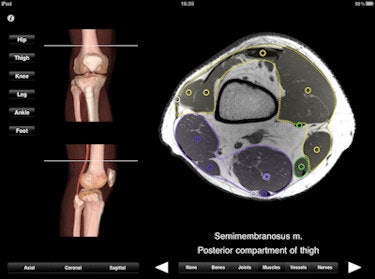 The lower limb app offers 384 MRI slices that can be viewed in sagittal, coronal, and axial planes.
The lower limb app offers 384 MRI slices that can be viewed in sagittal, coronal, and axial planes.While the app is not yet Gray's Anatomy, the group clearly plans to build on its first-to-Internet lead as the online anatomical reference source. In partnership with the university and the university hospital (CHU-Nancy), Monster Minds Media was formed in November 2010 to continue development of modules covering other regions of the human body under the direction of Louis, now a radiologist practicing with Guilloz Imaging Services.
"We are looking into other projects, though we plan to stay in the field of medical imaging," Labonne said.



